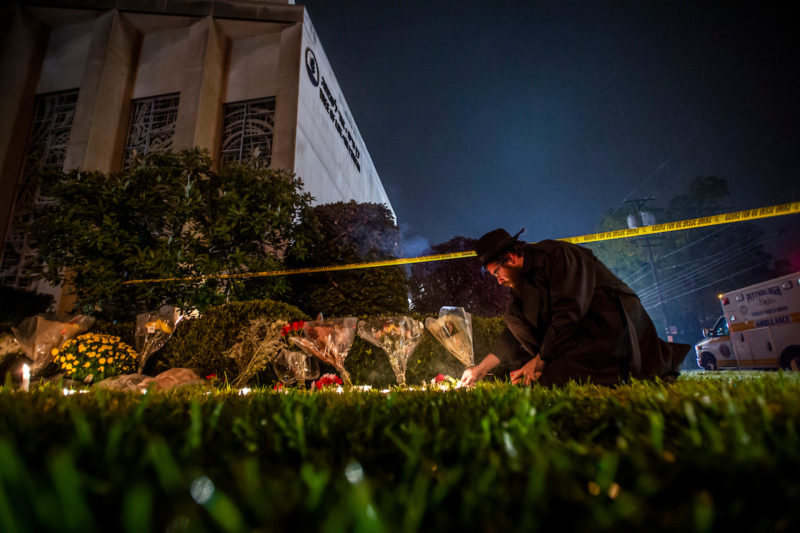One year ago, an unimaginable tragedy rocked the city of Pittsburgh.
During Shabbat morning services on October 27, 2018, a gunman opened fire on the congregation gathered at the Tree of Life Synagogue.
“The first person I called after hearing the news was Andrew Goldstein, our ace breaking news reporter who is also Jewish,” says Jim Mendenhall, photo editor for the Pittsburgh Post-Gazette. “I literally could not talk as I was filled with emotion that he was fine, but eleven of our Pittsburgh ‘family’ were gone.”
In the midst of their own shock and mourning, the Post-Gazette team set to work sharing this story with their community. Their coverage would later win the Pulitzer Prize for breaking news. The judges called their work, “immersive, compassionate coverage … that captured the anguish and resilience of a community thrust into grief.”
Compassion – and the kind of empathy that could only be felt by members of the Pittsburgh community – defined their coverage from the very first day.
Rebecca Droke, former Post-Gazette Managing Editor/Visuals, takes us back to the moment she heard the news:
“I immediately called two photographers who I knew had long glass on hand. They’d been covering high school football the night before,” says Rebecca. “Other photographers started calling to see where they were needed. We stationed photographers around the synagogue and rotated photographers out if they needed to file or take a break.”
With all hands on deck, the paper’s photo team fanned out to cover press conferences and vigils, constantly sending images back to the newsroom for review.
Jim Mendenhall reviewed the images in one huge Libris gallery, sorting the strongest photos into separate galleries for each page of the paper. He weighed each emotional picture against the next to narrow the collection down to 17 images for the first print edition.
“Part of my challenge was looking at such deep emotions night after night without letting that affect my performance,” says Jim. “No other story has touched me in a similar way, because I was always at least a little of an outside observer in the past.”
Jim’s colleagues in the field faced similar challenges – always towing the line between telling an honest, accurate story and being careful not to overstep.
“This is our city and we had to make sure to cover it right,” explains staff photographer Michael Santiago, “but there was no way that I could get over the pain and hurt that I was recording.”
One of the Post-Gazette’s online stories began with a song sung by Tree of Life Rabbi Jeffrey Myers at a memorial service attended by thousands of people. Staff photographer Jessie Wardarski recorded the audio.
“What you don’t hear or see from that audio are the rows of people in that auditorium crying, the women standing behind me as I recorded, silently sobbing,” says Jessie. “I think a large challenge was recognizing how to give trust and support from behind the lens.”
Jessie says her team struck a balance between fulfilling their duty to create certain images and doing so with great sensitivity.
“The challenges were numerous and unlike anything I had ever experienced before, but they were nothing compared to the challenges faced by the victims, families and the community around us,” says Jessie. “And as a local paper, we recognized this fully and did what we could to continue to give the world accurate and timely stories from our city.”
The Post-Gazette team put themselves in the shoes of their subjects, giving them a feeling of safety and trust.
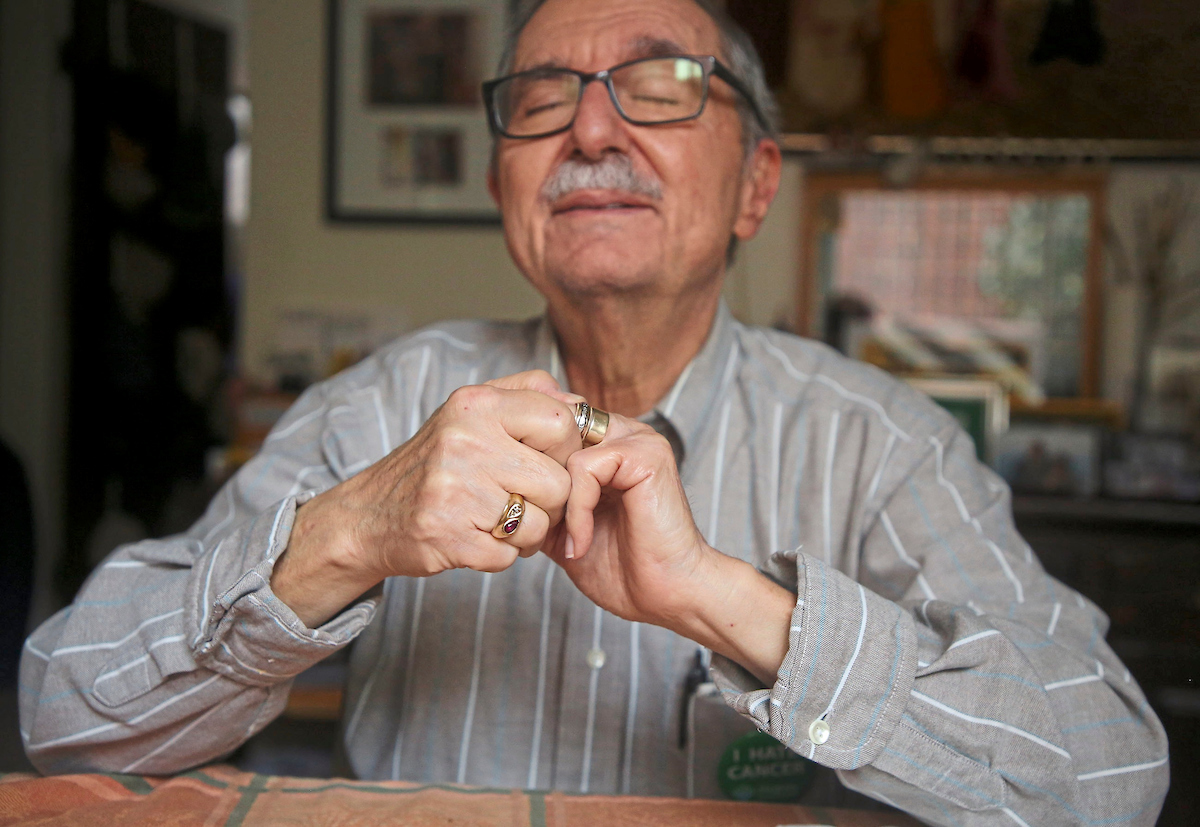
Jessie remembers being welcomed to the home of one of the survivors, Barry Werber. At first, she set her cameras down and they just talked. When the timing felt right, she picked up the camera, but they kept talking throughout their visit.
“When reflecting on his experience, Barry would arrive at a point where he could no longer speak about the attack, it was too traumatic for him to relive,” says Jessie.
She stopped recording and stopped taking photos.
“I think as journalists we’re taught to keep digging, to push for more, find the truth. In this moment with Barry, this was the truth. This inability to go on was the truth,” she explains. “Here is where, I think, compassion and understanding override your need to ‘get the story.’ I felt grateful that he had even let me into his home, let alone share those moments of fear and sadness.”
The team did their job, without ever compromising their respect for the victims, their families, and members of the Pittsburgh community.
“There were times when I was photographing someone who was having an emotional moment, crying, praying or being comforted, and I made a few frames and then stepped back to have that moment without undue interruption,” says staff photographer Alexandra Wimley, adding that she often asked people for their permission to publish their photo, and always respected their wishes.
The way these photographers covered the story created an incredible sense of trust with the rest of the community.
“Being local meant we were there immediately after it happened, for all the moments that followed, and we are still here,” says Alexandra. “And I think the community was aware of that and was more open to us than the national media, who were there for just 24-48 hours, because they knew we weren’t leaving and we were a part of the community.”
Members of the community even offered to help the Post-Gazette with their coverage. After seeing an image on social media, a reader reached out to share the names of students featured in the photo.
“It was incredible to know the community was watching what we were doing and helping to make our coverage even more complete,” says Rebecca.
Michael says the response from members of the community let him know they had done the job they were supposed to do in a way that respected everyone involved.
“I never want to run into anyone and have them upset with me because of a photo that I have taken,” says Michael. “During an assignment in March I ran into one of the police officers who was involved in the shooting. He recognized me and came over to shake my hand and to thank me for the way the staff covered the shooting. After that I photographed other survivors and they had the same sentiment and that meant a lot to me.”
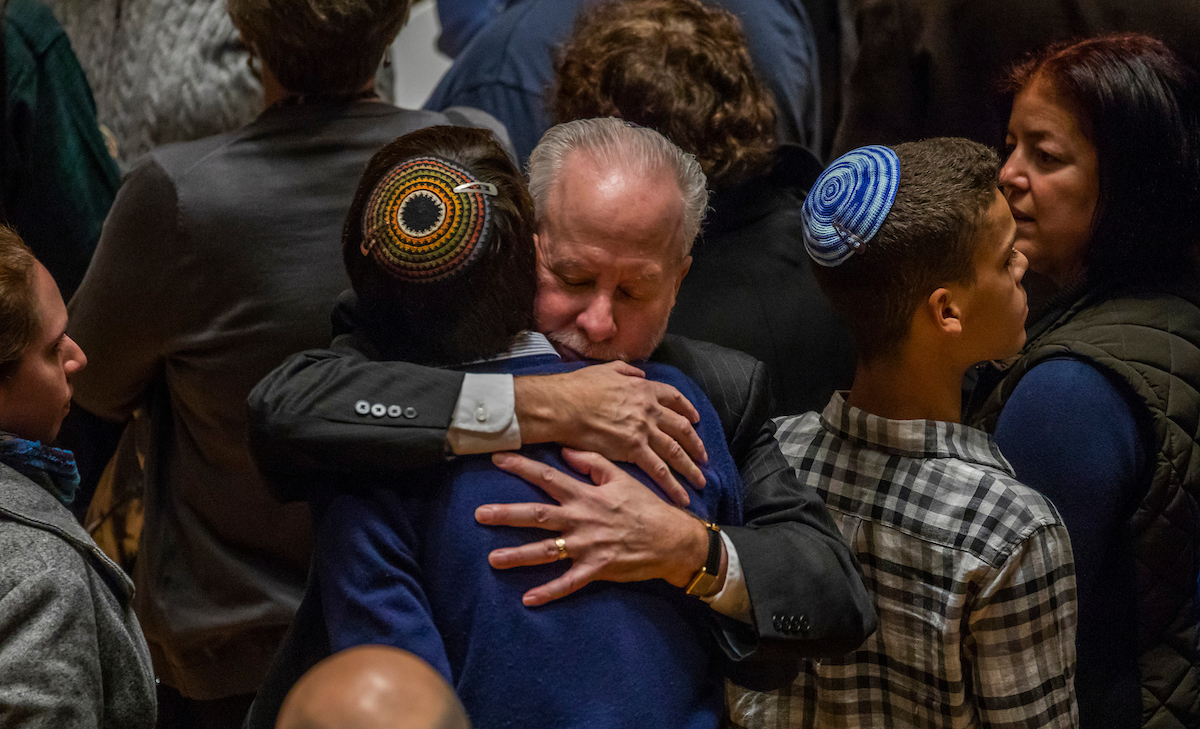
One of the most moving responses came from Rabbi Jeffrey Myers, who told the Post-Gazette, “This is your city and you were able to cover it in a way no one else could have.”
In particular, a front-page headline written in Hebrew, featuring the opening line of the prayer of Jewish mourners, caught Rabbi Myers’ attention.
“That just took my breath away. That a newspaper would publish something like that, it still leaves me speechless,” Rabbi Myers told the Post-Gazette.
Photographers across the newsroom were touched by Rabbi Myers’ response.
“This award is bittersweet. It is the highest honor to be awarded a Pulitzer, but we won it for one of the darkest events of my career,” says Michael. “It means the world to me that Rabbi Myers and others affected by the shooting were moved by the work.”
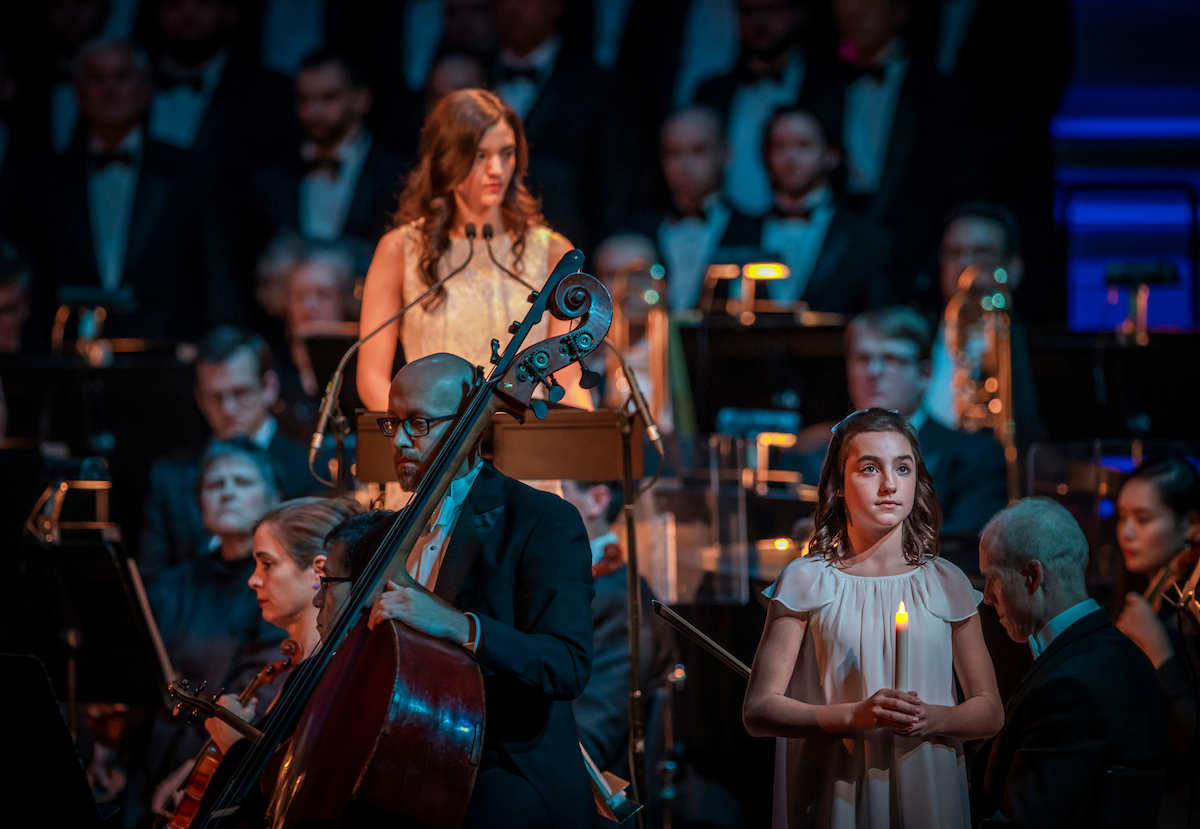
Last month, the Pittsburgh Post-Gazette team donated $15,000 – the monetary award that came with the Pulitzer Prize for breaking news – to the Tree of Life Congregation to help repair their synagogue.
In his presentation speech, the newspaper’s executive editor, Keith Burris, said the gift was a symbol of the bond between the Tree of Life community and the Post-Gazette team.
Looking back, Jim Mendenhall remembers how the theme of Pittsburgh being “unbroken” resonated strongly with him.
“I did feel that part of me wanted to be sure that not only did we go through the shock and grief together but we also were going to come through this together,” says Jim.
Multimedia editor Steve Mellon says one of the few memories he can recall without sadness is seeing the “stronger than hate” logo emerge online and in places across the city.
“It symbolized resilience and unity,” says Steve. “I saw this, too, in the photojournalism produced by the Post-Gazette staff. I look at the pictures now, and clearly remember the sorrow and shock. But I also see the best of us — hundreds gathering in the rain to show support for victims and their families, mourners leaning against each other and finding strength in shared grief. I’m grateful to hear these images moved members of the community and perhaps helped bring people together.”
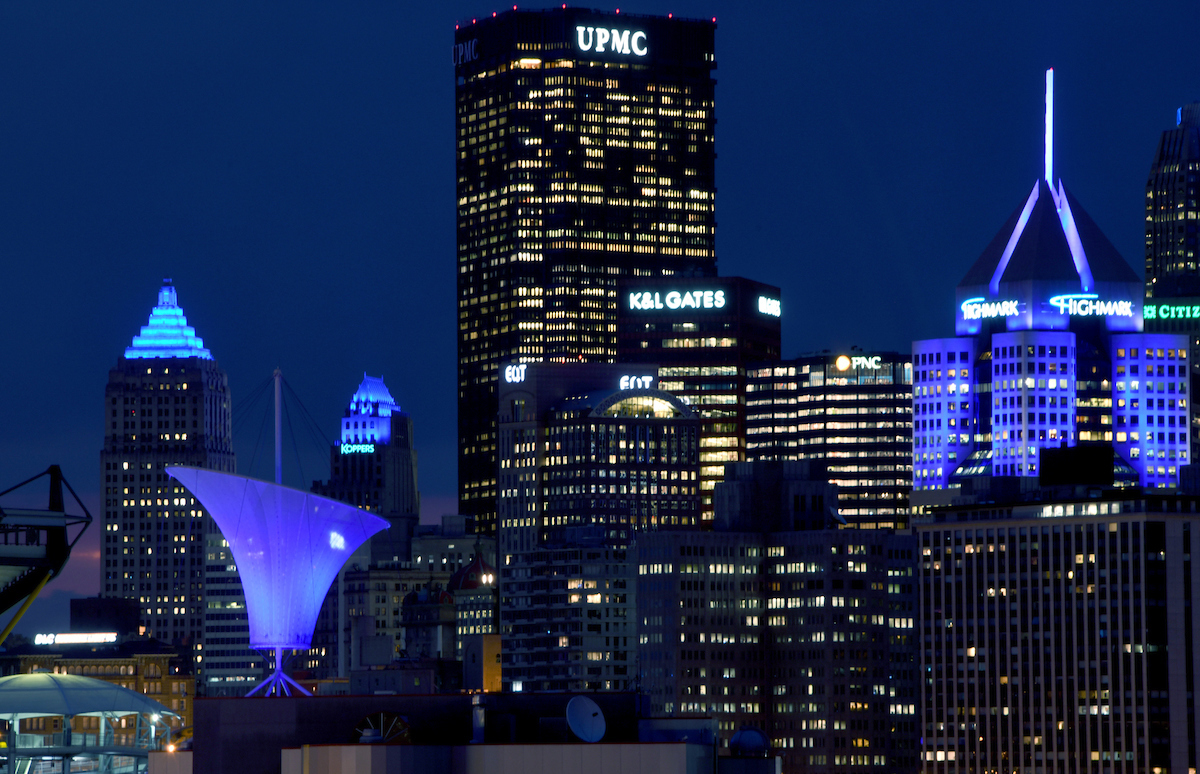
We’re proud to be a part of the Pittsburgh Post-Gazette’s everyday workflow, making it easier for their team to do such important, meaningful work. Photo editor Jim Mendenhall uses Libris to view the staff’s images, make selects for print and digital media, and work with collaborating editors to make a final edit.
Here’s what Jim had to say about Libris:
“What your audience should know is that PhotoShelter Libris is the part of our system on which I can always rely with confidence.”
We’re honored to work with the Post-Gazette team, and to be there for them when it counts.
